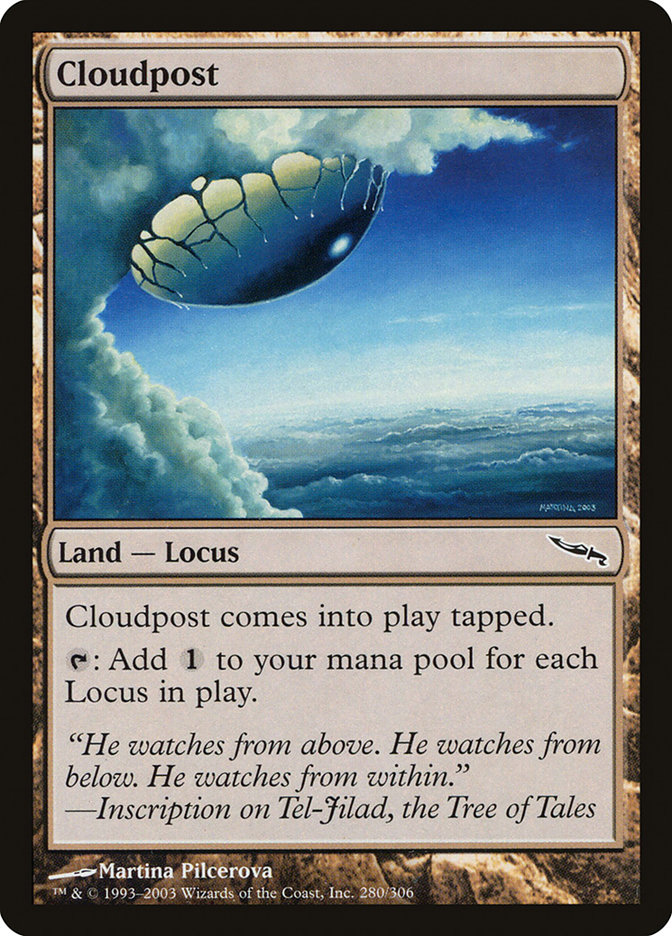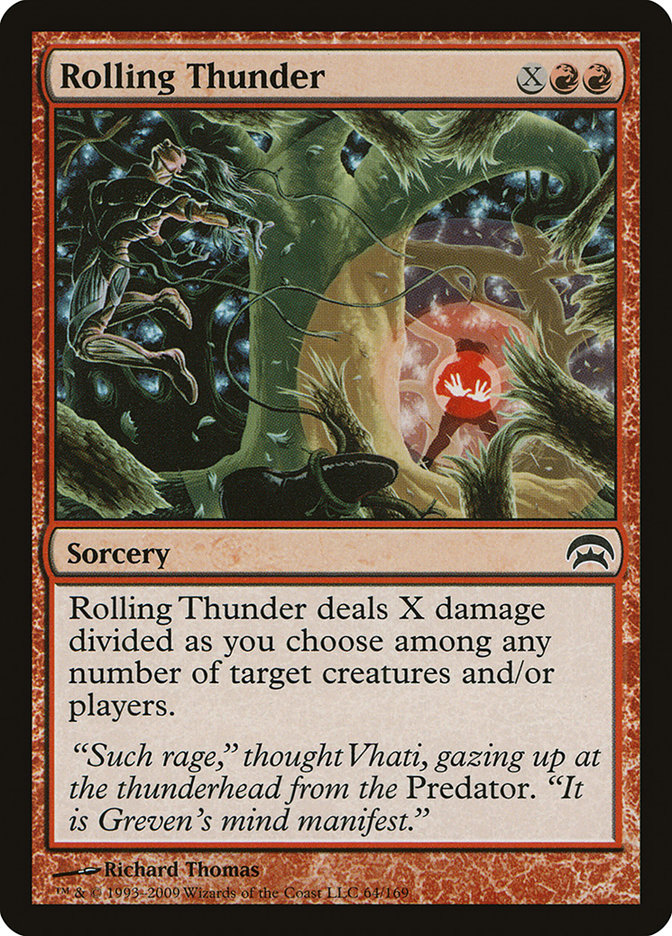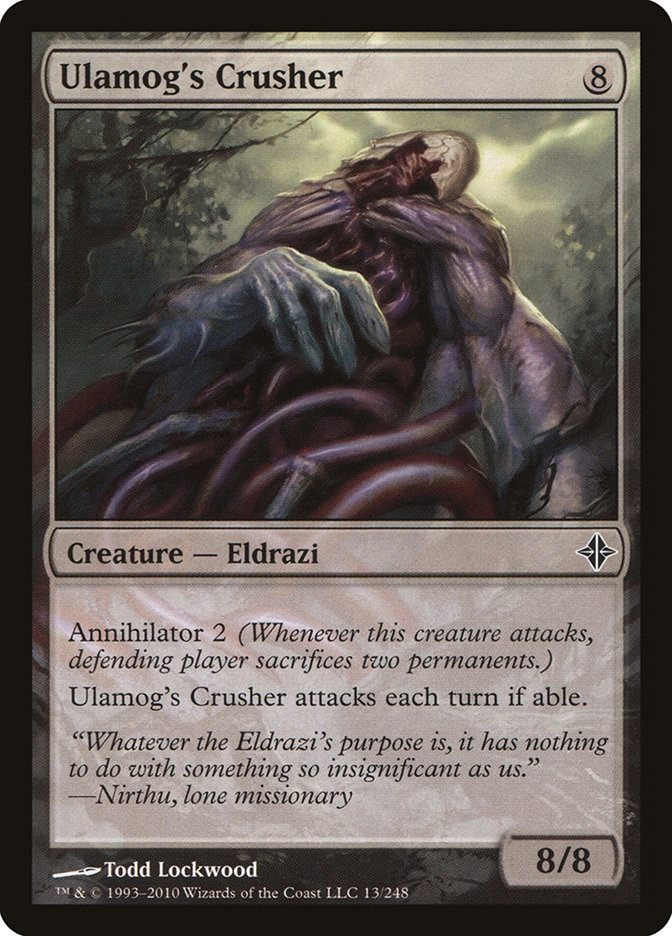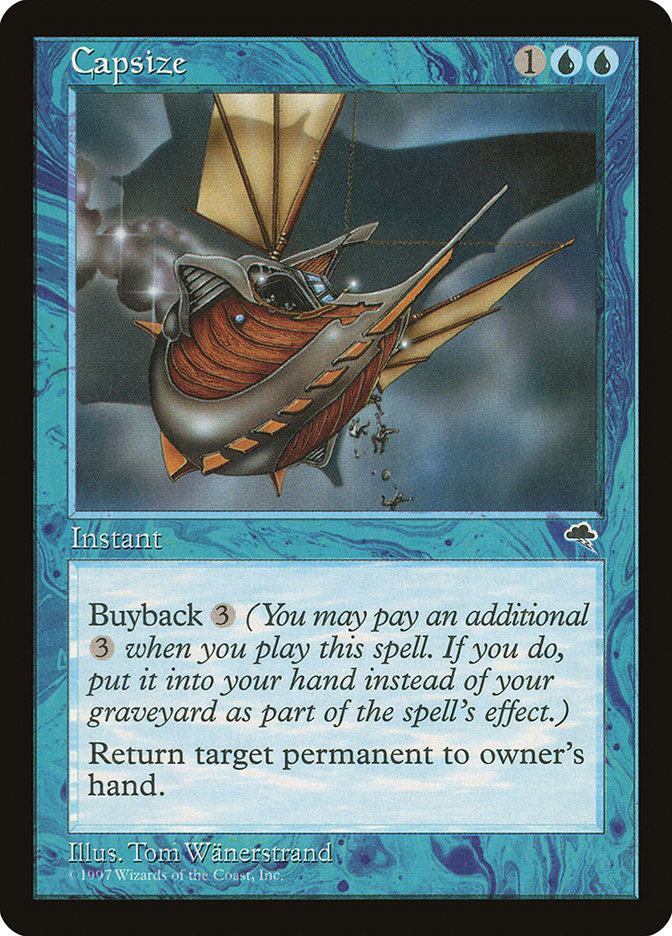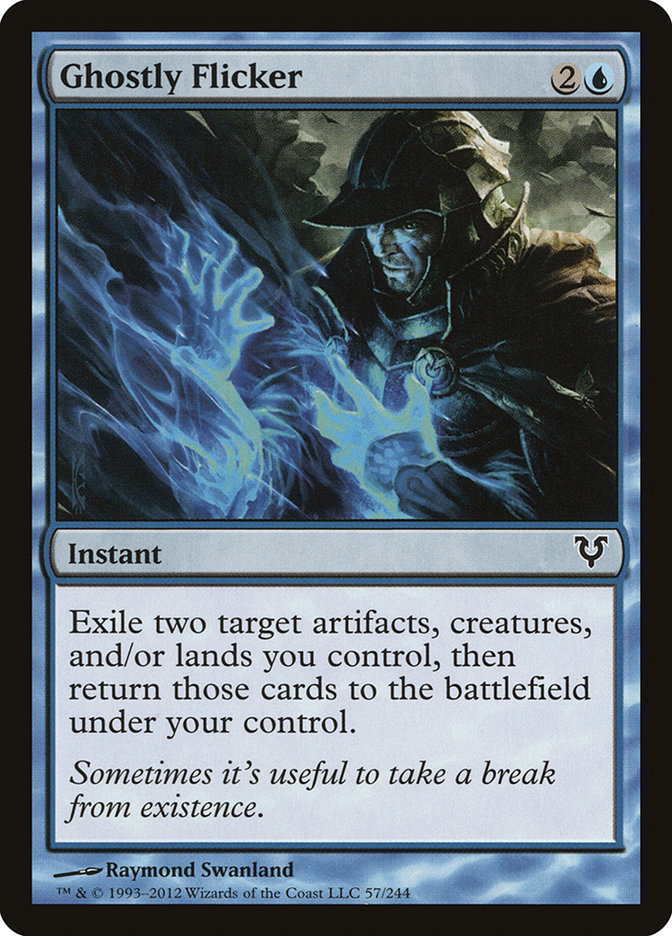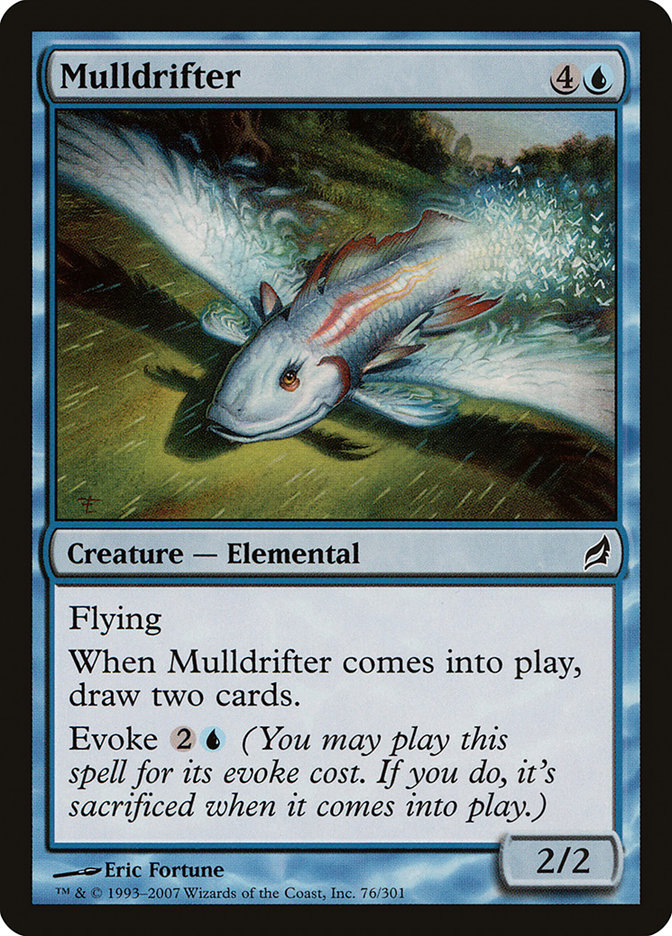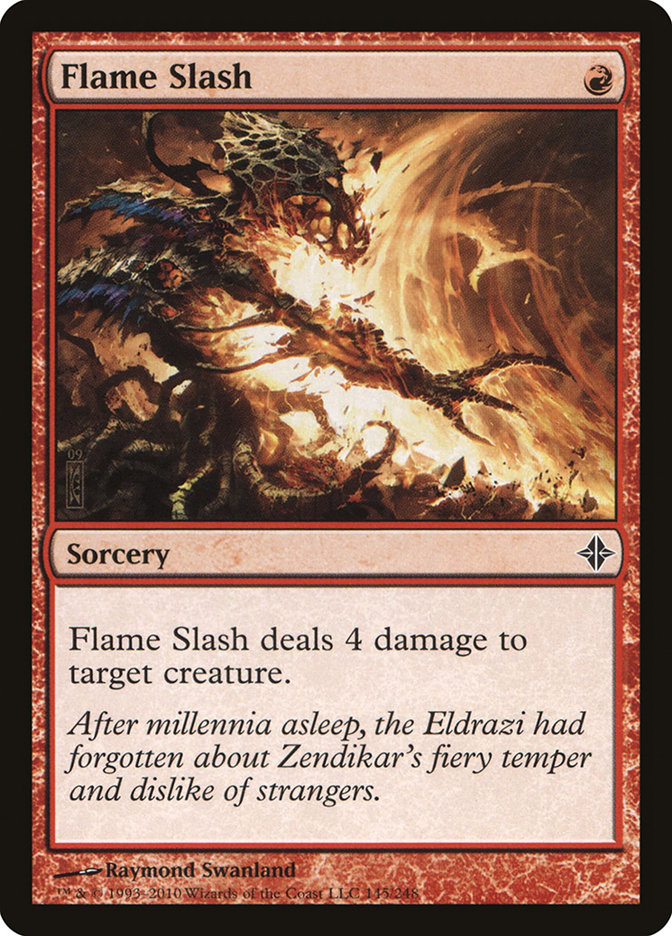Long live Pauper!
So we meet again. I’d like to extend my deepest thanks to all of you for making my first article with StarCityGames.com such a success! Without your input, participation, or support, the initial premise for this column would’ve fallen right on its face. As far as I’m concerned, this platform is as much yours as it is mine, and I’d like for us to keep it that way. Thank you all very much!
Last time I asked for your help. I needed to make a decision between three decks, each with their own set of pros and cons. The three decks in question were Affinity (a broken but often hated aggro-combo deck), White Weenie (my questionably positioned beatdown darling), and Izzet Cloudpost (a powerful control deck that I lack confidence in piloting).
There were many valid opinions stemming from each side of the voting triumvirate, but when it’s all said and done, there can be only one champion!
Ladies and gentlemen, I present to you the deck I’ll be focusing the majority of my time and energy on. The deck I’ll be testing, tweaking, and having Flame Slash filled nightmares about. The deck, the land, the legend!
A bit melodramatic, isn’t it? Maybe I should cut to the chase.
That’s right, baby! The most feared tapped land in the format. The subject of forum gripes and ban discussions across the Internet. The people have spoken. Izzet Cloudpost, come on down!
Creatures (6)
Lands (25)
Spells (29)
- 2 Counterspell
- 4 Accumulated Knowledge
- 1 Rolling Thunder
- 1 Capsize
- 2 Serrated Arrows
- 1 Electrostatic Bolt
- 1 Hindering Touch
- 2 Prohibit
- 1 Firebolt
- 2 Compulsive Research
- 2 Mystical Teachings
- 1 Curse of Chains
- 4 Flame Slash
- 4 Prophetic Prism
- 1 Ghostly Flicker
Sideboard

Izzet Cloudpost: Your Opinions
"Izzet Cloudpost is the most interesting . . . It will take a little time and experience to learn the best "move," but later you play the potential[ly] strongest deck with the possibility to get new cards from new sets." –Mario Schmitz
"Izzet Post is an incredibly powerful strategy that is also drastically different from the other two decks in that it rewards patience. It also is the deck with the largest number of flexible slots, meaning you can easily adjust it as the metagame shifts. I vote for Izzet Post and can’t wait to see what you do with it!" –Alex Ullman
"Cloudpost needs to be banned in Pauper." –Martin Caillou
Izzet Cloudpost: My Opinion
I love having inevitability. Drawing extra cards. Having an embarrassment of riches. Izzet Cloudpost tends to excel in these categories. At the same time, I definitely don’t love racing against the clock, racking my brain, or trying to stabilize at one life. These situations seem to arise when I play Izzet Cloudpost as well.
And that for me is the control deck tradeoff. When things are good, they’re very good, but it usually takes some blood and sweat to get them that way. This is especially true in a format with extremely limited board-sweeping options and a lack of splashy finishers. Needless to say I have a lot of growing to do as a control player.
This is where you come in!
Once again, I need your help (you should be starting to notice a pattern here). Control decks have never been my strong suit, but for the sake of my Pauper aptitude, they’ll need to be. Today you’re going to help me learn. Today you’re going to help me hone my skills as (dun dun dunnn) a control mage!
How I Build Control Decks
I’d like to start by explaining how my Izzet Cloudpost list came together. What follows will hopefully provide some insight on general control deck construction, but feel free to point out any gaps in my logic. Keep in mind that if you feel strongly about any aspects of the list, I’d definitely like to know!
When I’m building a control deck, I usually have some ideal color combination already in mind (based on what colors interact favorably with the most prominent features of the metagame). Blue is almost always a given for me, as it’s the best color for card advantage and permission. There shouldn’t be any controversy here. I’m pretty sure we can all agree that blue is awesome.
But sometimes blue needs help. This is because blue doesn’t interact with permanents (be they artifacts, creatures, or enchantments) as effectively as the other colors do.
So what color needs to step in? It is my assertion, based on metagame results and logic, that red is the best "buddy color" for a dedicated controlling Cloudpost variant.
Red deals with both artifacts and early game creatures very well but lacks effectiveness against mammoth late game creatures like Atog and Ulamog’s Crusher. I think these attributes are preferable since our natural strengths in the late game will allow us to deal with those large creatures in other ways (such as bouncing, countering, or ignoring them).
Win Conditions
When it comes down to actual control deck construction, the first question I ask myself is this: what powerful win conditions am I going to incorporate to defeat my opponent? This is a very important question to ask because a deck full of answers is still going to need one or two resounding methods for categorically winning once we’ve stabilized. In formats like Standard, planeswalkers, various "Titans," and creatures like Aetherling often fill this role.
If only we could be so lucky.
I’ve opted for four win conditions, with two of them acting as "virtual" win conditions (meaning they don’t literally kill the opponent but still facilitate a victory if unanswered). The literal win conditions are Rolling Thunder and Ulamog’s Crusher, and the virtual win conditions are Capsize and Ghostly Flicker.
Yes, Thunder can be expensive to utilize as a board sweeper and even more expensive to utilize as an opponent sweeper. I mean, if we have access to 22 mana, shouldn’t we be winning the game anyway? Sure. But we still need something in the deck to win with! The fact that that something can double as mass removal and be rebought with Mnemonic Wall later is just icing.
Ulamog’s Crusher is more-or-less a "win now" card and the most reasonable Aetherling we can play. Capsize is tutorable (Mystical Teachings) and has the potential to win mirrors, but I find myself boarding it out in a lot of matchups. This is definitely a card to keep an eye on moving forward. Lastly, Ghostly Flicker is one of the most disgusting cards in Pauper, with a lot of versatility and Mnemonic Wall abusefulness (yep, fake word).
An important thing to remember about these win conditions is that I’m only playing one copy of each. This is because one copy is likely all we’ll need. Capsize and Flicker can be tutored up, and none of these cards are beneficial in our opening seven.
An argument can be (and sometimes is) made for Temporal Fissure as an Izzet Post virtual win condition. Pauper’s last viable storm card standing, Fissure has the potential to wreck a lot of opponents. But I don’t think this is the right home for it. We can’t really generate a ridiculous Storm count or net additional mana since we’re not playing enablers like Cloud of Faeries or Snap. For that reason alone I think I’ll leave the Fissuring to decks that are truly committed to it.
So we’ve got our win conditions, but we’ll need to survive long enough to employ them. Let’s move on to my next step in control deck construction.
Automatic Four-Ofs
While it’s important not to blindly copy other people, we have to acknowledge the fact that Izzet Cloudpost has been around for a long time and has achieved success repeatedly thanks to a number of key cards. The following are what I consider to be "automatic four-ofs" in an Izzet Cloudpost control deck.
These really should go without saying. They are core tenets of our strategy, providing us with absurd amounts of mana ramp and life gain. We want to play as many copies of these as possible in order to exponentially increase their potency.
Mulldrifter works as a four-of because of its versatility and value generation. In a pinch we can cast it as a Divination to hit land drops or find answers. We can also win the game by repeatedly getting them into the red zone. It doesn’t hurt that it’s one of the most devastating Ghostly Flicker targets around!
As a baseline point-and-shoot removal spell, Flame Slash is great. It kills nearly anything (for the low low cost of R) and is particularly handy against antagonistic early game assaults. Carapace Forgers, Frostburn Weirds, Mnemonic Walls? None of them survive the Slash.
This cantripping artifact is very handy. It fixes our colors early and allows us to flashback Ancient Grudge and Mystical Teachings later in the game. We can use it to draw cards with Ghostly Flicker as well.
Another common four-of is Preordain, though I don’t consider it to be a mandatory Izzet Post inclusion. I’ve been trying out Ponder (and most recently Accumulated Knowledge) in its place and have been quite happy with the change.
The Other Stuff
Outside of the win conditions and automatic four-ofs, we have several slots dedicated to creature control, countermagic, and additional card draw. These slots are certainly up for debate, as evidenced by winning Daily Event lists.
I value two for ones very highly in a Pauper control deck because I want ways to compensate for our lack of wrath effects. This is why Firebolt and Serrated Arrows are currently in the deck. I also like Curse of Chains for its ability to neuter large creatures and Electrostatic Bolt as a Teachings target with oomph.
Hindering Touch will hopefully fend off Temporal Fissure, and neither Counterspell nor Prohibit are dead in the late game.
Please share any thoughts you have on cards I’ve overlooked or overvalued. I anticipate that a number of slots will change as my testing progresses.
Moving Forward
As an admittedly mediocre control player, I find myself once again conflicted. I have no idea where to go from here! What is going to be my best course of action moving forward? I’ve managed to scrounge up three possible options, but I’m not sure which one will help me improve the most. I need your help determining the right "play."
Option #1: Continue Tweaking
This option will require an extensive Gatherer browsing session in addition to head-to-head analyses of several potential card choices.
The benefits? I learn a lot more about the Pauper card pool and get a strong handle on what the lands and spells in Izzet Cloudpost actually do. I’ll also of course be returning to share my findings with all of you.
The downsides? I will have far less time to pilot the deck and be favoring theory over practice.
Option #2: Play Daily Events
Pretty straightforward. I enter this list into a couple Daily Events to really see what it can do.
The benefits? I get to work on my decision making in a competitive setting and determine how good (or not so good) my skills as a control player currently are.
The downsides? Without any considerable knowledge of this deck’s intricacies or its matchups, I could very well end up getting curb stomped by the opposition with little new knowledge gained.
Option #3: Grind Top Tier Matchups
This is the playtesting option. Here I grind matches against top-performing Pauper decks piloted by players I respect. I take notes about sideboarding and general game dynamics and figure out Izzet Cloudpost’s metagame positioning.
The benefits? I get some piloting time in while concurrently recording empirical data.
The downsides? I spend less time combating rogue brews and lower tier opposition and am playing with nothing "on the line."
Your Turn
I am leaving the decision of which path to tread in your capable hands. Whichever option receives the most votes or has the most convincing supporters will be enacted and written about in a future article! The comments section works best, but you can also email me at [email protected].
Don’t be afraid to let me know your thoughts on this article either. I’m very interested in hearing what you have to say.
Until next time!

